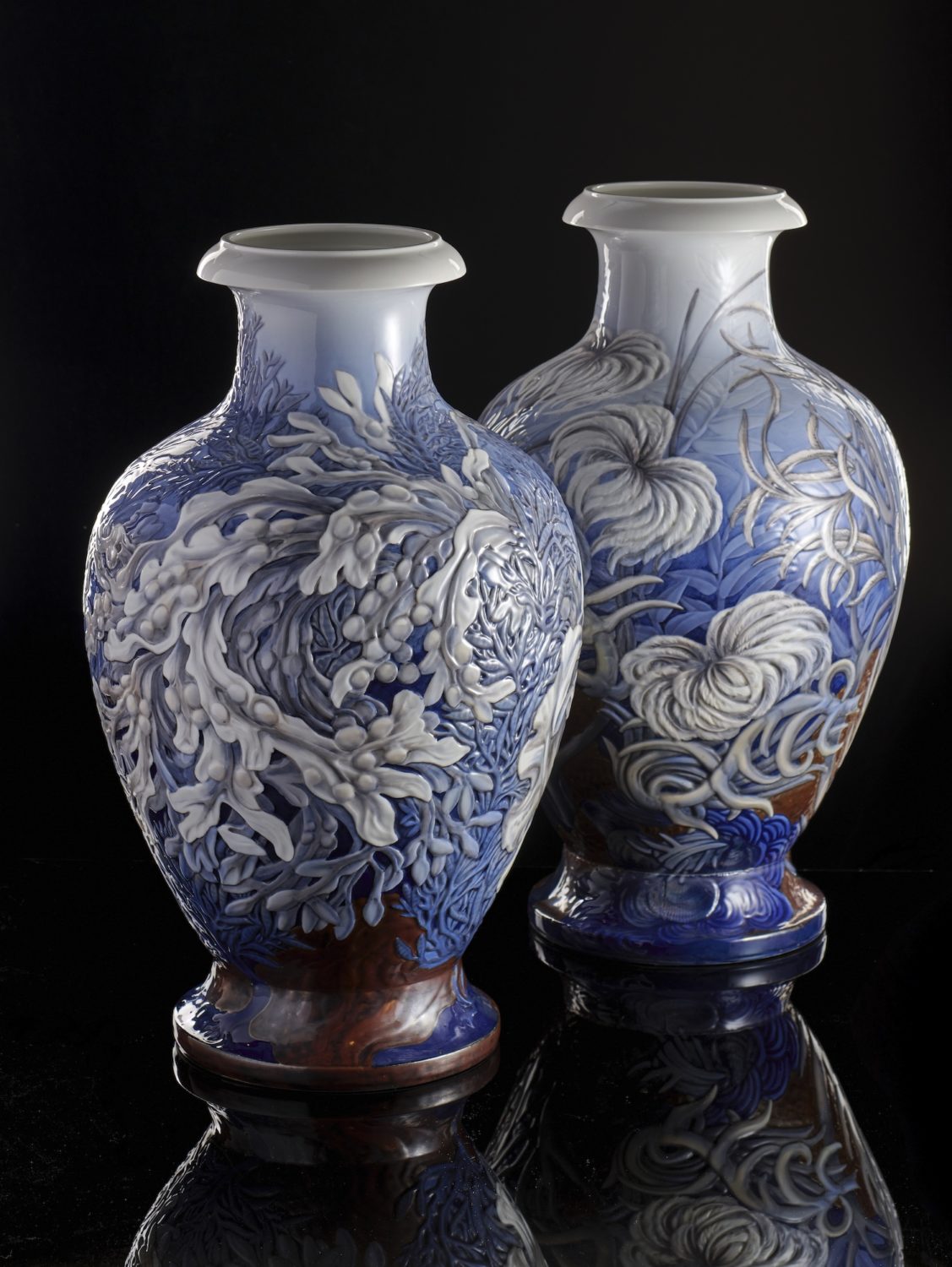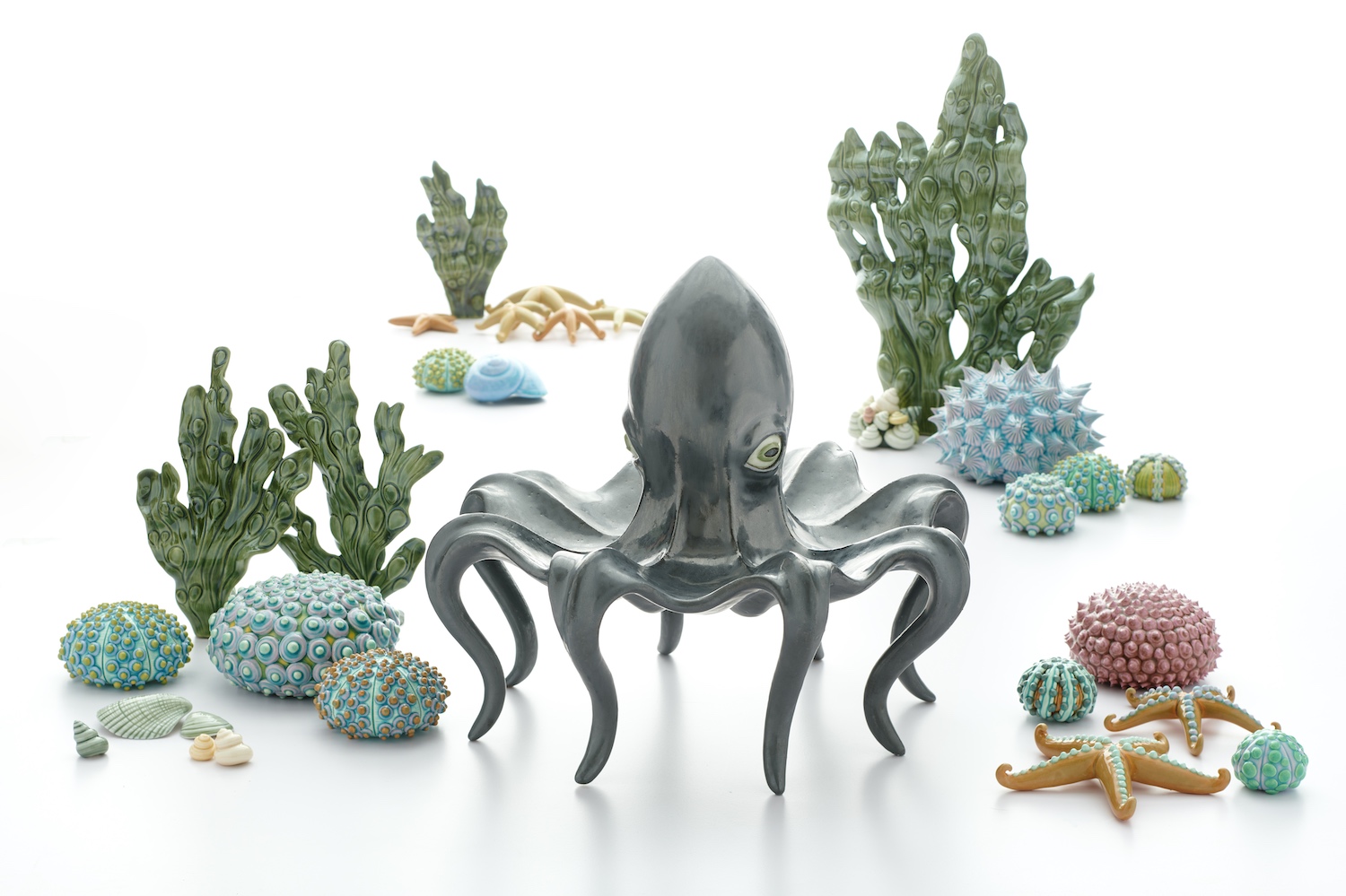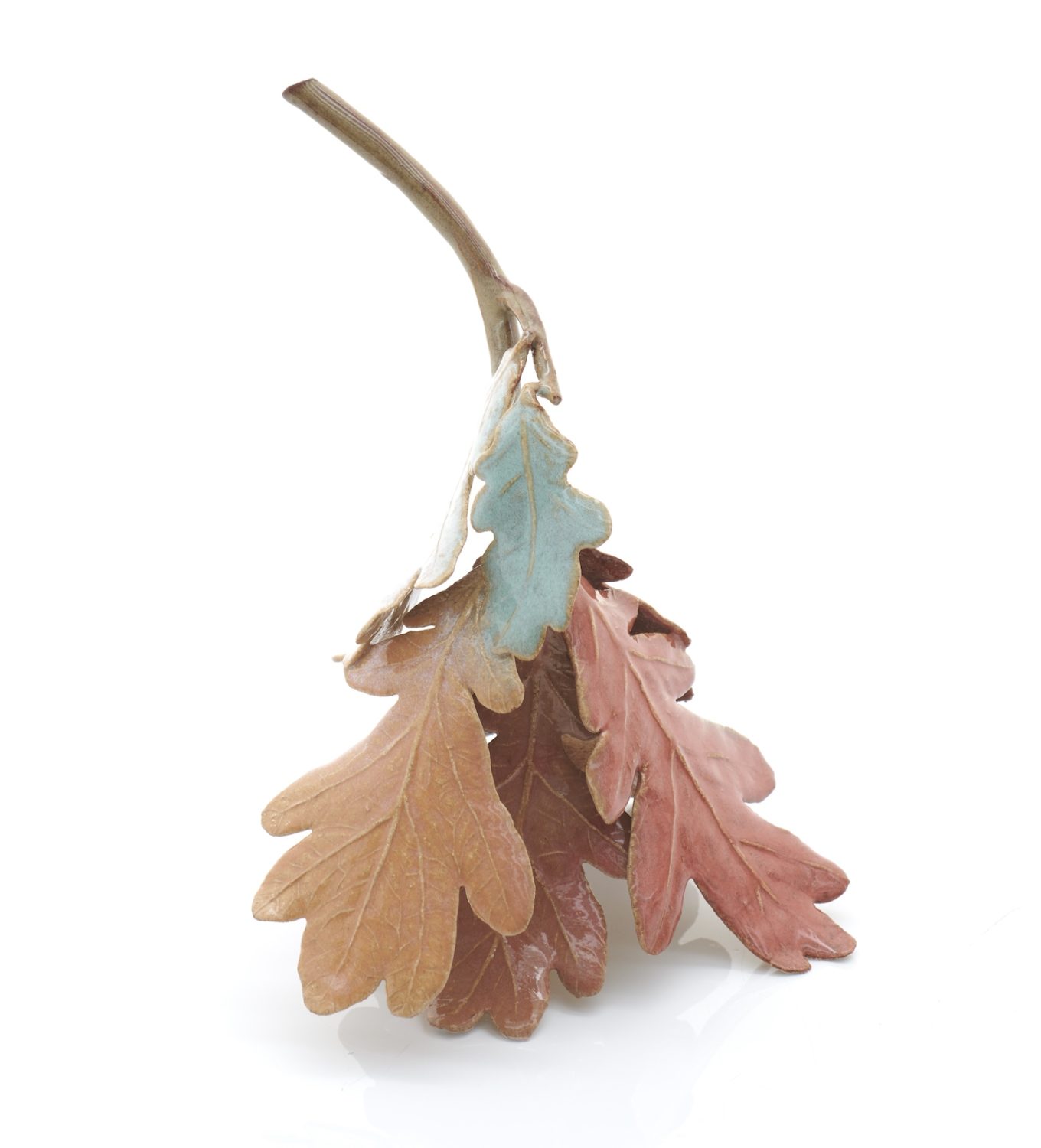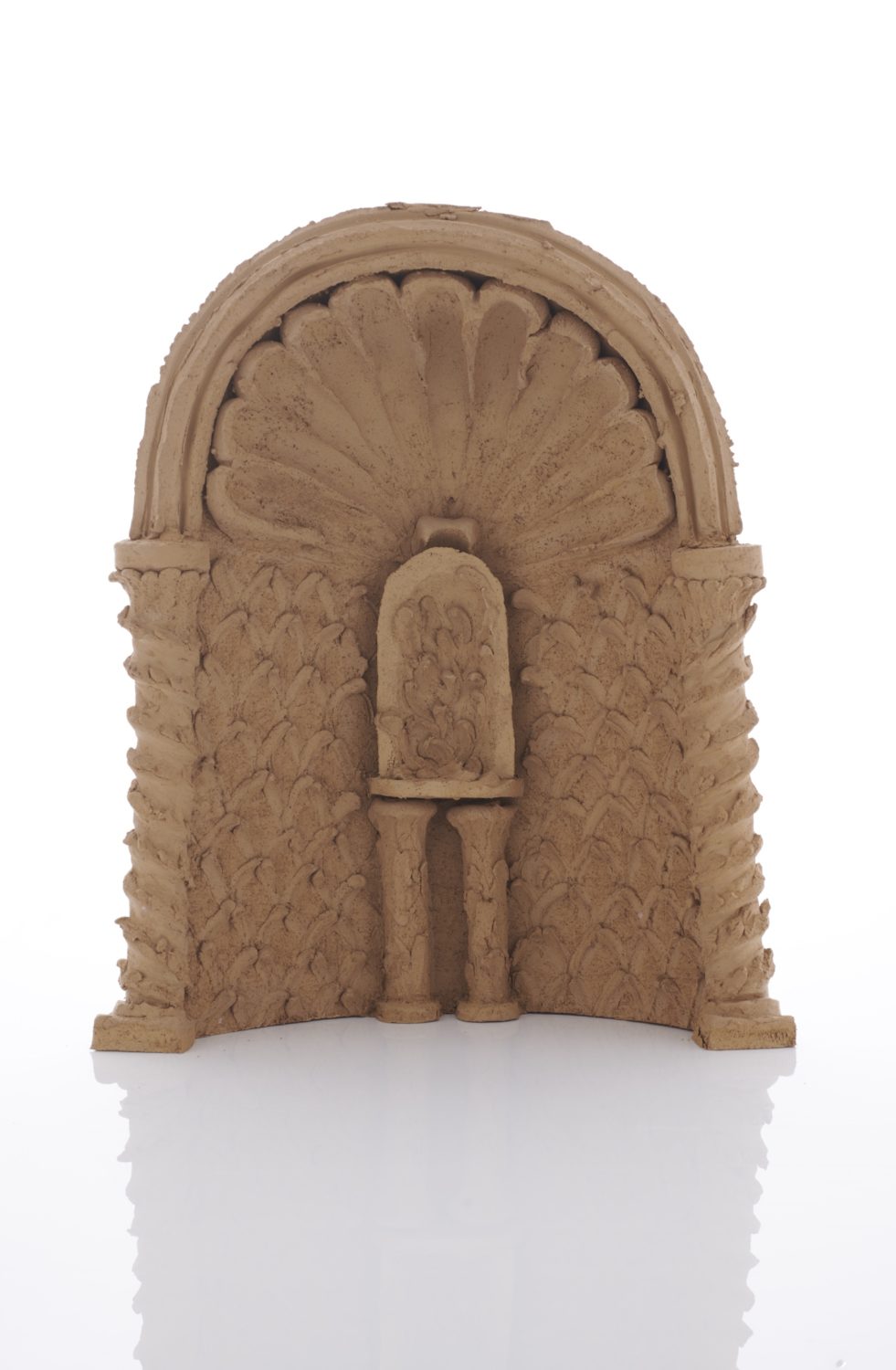Maximum sensuousness
What a timely idea it is, to ask contemporary craft makers reinterpret Effie Hegermann-Lindencrone and Fanny Garde! Across a distance of just over a century, we know their work so well, yet so superficially. The two artists reproduced nature’s modest plants – seaweed, ferns, daisies, mushrooms – in ultra-glossy porcelain in objects that, at first glance, appear to show nature in a neat, tamed version.
But look again: the glossy porcelain actually looks wet, evoking thoughts of jelly-secreting molluscs and lasciviousness. Maximum sensuousness! Although the objects are delicate, with exquisite openwork elements, Effie and Fanny show us nature at its most intense, heaving, throbbing.
The three invited ceramic artists who created the exhibition Nature. Traces & Reflections capture this quality, each of them finding their own tangent of inspiration.

Inspiration from Japanese animism
Malene Hartmann Rasmussen’s ocean and forest floors are home to animated plants and creatures that beckon the viewer into a mythical world. Echoing Effie’s and Fanny’s work, this is a place of seaweed and fungi and teeming, exuberant growth. Pieces such as Havspejl (Sea) and Tangmanden (Seaweed Man) are imbued with a vaguely ominous presence, something from a different dimension.

And like Effie’s and Fanny’s work, they draw on Japanese inspiration: animism, excitement over the small elements of nature. However, while Effie’s and Fanny’s colour palettes cover a spectrum of browns, greys and blues, nature’s palette has mutated to intense brights in Hartmann Rasmussen’s work, and the creatures possess an appealing charm. This is pure kawaii: the Japanese fascination with insistent cuteness. With big eyes, explosive flower buds and cute little limbs, nature holds an irresistible appeal.
Impending sense of doom
Marianne Nielsen’s objects mainly reinterpret the fragility of the two maternal ancestors’ works. Her own process often begins with paper constructions, and the light character of this medium is maintained when her ideas are translated into porcelain, and flowers and plants stay upright by leaning against each other. Her colour scale is closer to Effie’s and Fanny’s, albeit in a tweaked, ambiguous version: metallic blueish brown, dirty coral, yellowish eau de Nil and lilac transitioning into brown create an impression of decay and impending doom.

The same feeling characterizes Manuel Canu’s large clay altar with seashell formations stemming from the crackling that occurs when the clay dries and expands.
His objects are a far cry from the smooth, perfect surfaces in Effie’s and Fanny’s objects, yet close to their sensuous undulating character, especially in the watercolours and ceramic reliefs, where Canu meditates on seaweed as rhythm, form and pattern.

The exhibition requires its audience to take their time and lose themselves in the unknown worlds, and although the catalogue offers a wealth of background information and reflections, the experience might still benefit from an additional helping hand – perhaps an audio backdrop or fragments of stories? It might also have been nice to be greeted by one of Effie’s and Fanny’s objects from the start, even if seduction soon sets in and sucks the viewer into this universe of other species.
Nature. Traces & Reflections. CLAY Museum of Ceramic Art Denmark until 13 March 2022
Search the Archive


